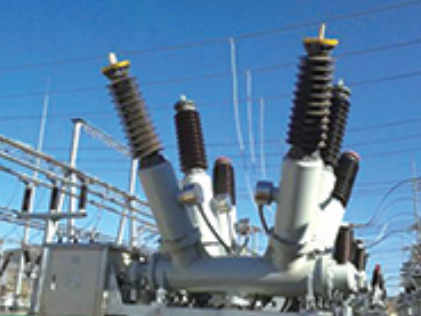Oil-immersed transformers are widely used in power distribution, but safety risks and environmental concerns, such as oil leaks, fire hazards, and pollution, require careful management. Improper handling and maintenance can lead to equipment failures, safety hazards, and environmental damage. Ensuring compliance with safety regulations and adopting eco-friendly practices is essential for sustainable and reliable transformer operation.
This article explores key safety measures, environmental protection strategies, and best practices for reducing risks while maintaining efficiency in oil-immersed transformers.
What Are the Main Safety Risks Associated with Oil-Immersed Transformers?
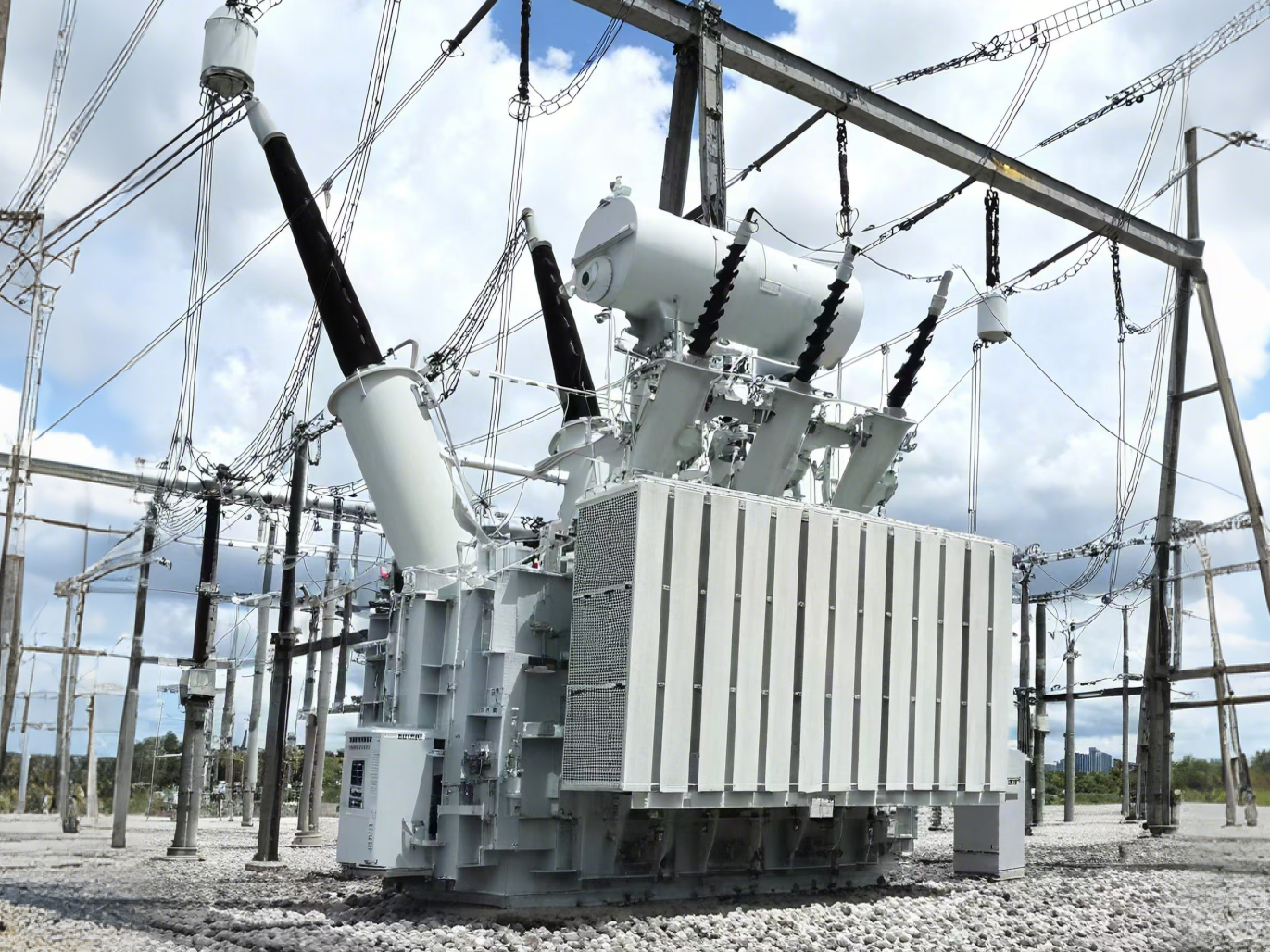
Oil-immersed transformers play a crucial role in power transmission and distribution by ensuring efficient voltage conversion. However, they contain large volumes of insulating oil, which introduces potential safety hazards if not properly maintained or monitored. Fire risks, explosions, oil leaks, and electrical faults can endanger personnel, damage infrastructure, and lead to power outages.
The main safety risks associated with oil-immersed transformers include fire hazards, explosions, oil leaks, insulation breakdown, and environmental contamination. Proper maintenance, monitoring, and protective measures help mitigate these risks, ensuring safe transformer operation and longevity.
This guide explores common transformer safety risks, their causes, consequences, and best practices for accident prevention.
Oil-immersed transformers do not pose significant safety risks.False
Oil-immersed transformers contain flammable insulating oil and operate at high voltages, making fire, explosion, and electrical hazards a significant safety concern.
1. What Are the Major Safety Risks of Oil-Immersed Transformers?
A. Fire and Explosion Hazards
One of the most severe safety risks associated with oil-immersed transformers is fire and explosion due to oil ignition or internal faults.
Causes of Transformer Fire & Explosion:
🔥 Electrical Faults: Short circuits, arcing, or insulation failure can generate extreme heat, igniting the oil.
🔥 Overheating: Excessive temperature rise due to cooling system failure can cause thermal runaway.
🔥 Dissolved Gas Accumulation: Fault conditions can generate explosive gases (acetylene, hydrogen).
🔥 Oil Leaks Near Hot Surfaces: Leaked oil coming into contact with live electrical parts or external flames can ignite.
Consequences:
⚠ Severe equipment damage due to explosion force.
⚠ Fire spreading to surrounding infrastructure, causing widespread outages.
⚠ Personnel injury from burns or blast impact.
✅ Prevention Measures:
✔ Install Buchholz relays to detect internal gas accumulation and shut down the transformer.
✔ Use fire-resistant barriers and transformer fire suppression systems.
✔ Maintain proper oil levels and cooling system efficiency.
✔ Regular dissolved gas analysis (DGA) to detect early fault signs.
B. Oil Leaks and Environmental Hazards
Transformer oil serves as an insulator and cooling medium, but leaks can cause environmental contamination and electrical hazards.
Causes of Transformer Oil Leaks:
🔴 Deteriorated Gaskets & Seals: Aging or damaged gaskets allow oil to escape.
🔴 Cracked Oil Tank or Radiators: Structural failure due to mechanical stress or corrosion.
🔴 Excessive Oil Pressure: Sudden pressure surges can cause oil to force its way out.
Consequences:
⚠ Slippery surfaces leading to workplace accidents.
⚠ Oil contamination of soil and water sources.
⚠ Increased risk of fire if oil reaches hot surfaces.
✅ Prevention Measures:
✔ Conduct routine visual inspections for leaks and oil stains.
✔ Install oil containment systems to prevent spills from spreading.
✔ Replace aging gaskets and seals before failure occurs.
✔ Maintain proper oil pressure relief systems to prevent tank damage.
C. Insulation Breakdown and Electrical Faults
Transformer oil provides electrical insulation, but if contaminated, it loses its dielectric strength, leading to faults.
Causes of Insulation Failure:
⚡ Moisture Contamination: Water in oil reduces insulation capacity, leading to flashovers.
⚡ Aging Oil and Sludge Formation: Oxidation degrades oil quality, lowering dielectric strength.
⚡ Overloading and Overvoltage: Excessive electrical stress weakens insulation over time.
Consequences:
⚠ Flashovers and short circuits, leading to transformer shutdown.
⚠ Accelerated aging of windings and core insulation.
⚠ High risk of secondary failures in power grids.
✅ Prevention Measures:
✔ Perform dielectric strength testing every 6-12 months.
✔ Keep oil moisture content below 10 ppm through filtration.
✔ Avoid prolonged overloading to prevent excessive electrical stress.
D. Cooling System Failure and Overheating
A transformer’s cooling system ensures temperature stability, but malfunctions can lead to severe overheating.
Causes of Cooling System Failure:
🌡 Blocked Radiators or Cooling Pipes: Dirt and sludge accumulation reduce heat dissipation.
🌡 Fan or Oil Pump Malfunction: Forced cooling systems fail if these components stop working.
🌡 Low Oil Levels: Reduced oil volume affects heat transfer efficiency.
Consequences:
⚠ Transformer temperature rise beyond safe limits.
⚠ Oil degradation and sludge formation due to overheating.
⚠ Reduced insulation life and increased fire risk.
✅ Prevention Measures:
✔ Inspect and clean cooling fins and radiators regularly.
✔ Check oil circulation pumps and fan operation during maintenance.
✔ Monitor top-oil and winding hot-spot temperatures using thermal sensors.
2. Best Practices for Transformer Safety and Risk Mitigation
| Safety Measure | Purpose | Recommended Frequency |
|---|---|---|
| Dissolved Gas Analysis (DGA) | Detects overheating, arcing, and fault gases | Every 6-12 months |
| Dielectric Strength Test (BDV) | Ensures insulation capability | Every 6 months |
| Oil Leak Inspection | Prevents environmental hazards | Monthly |
| Thermal Imaging Scan | Identifies hot spots and cooling failures | Every 6 months |
| Cooling System Maintenance | Ensures effective heat dissipation | Quarterly |
| Fire Protection System Check | Prevents explosion and fire risks | Annually |
✅ Following a structured maintenance plan minimizes safety risks and ensures reliable transformer operation.
3. Emergency Response Measures for Transformer Safety
A. Fire Emergency Response
🔥 Shut down the transformer immediately if overheating or internal arcing is detected.
🔥 Activate fire suppression systems (CO₂, water mist, or dry chemical agents).
🔥 Evacuate personnel from hazardous areas and notify emergency responders.
B. Oil Spill and Leak Containment
🛢 Use oil absorbent materials to prevent spreading.
🛢 Deploy secondary containment barriers to protect soil and water sources.
🛢 Report spills according to environmental regulations.
C. Electrical Fault Response
⚡ De-energize the transformer to prevent electrical hazards.
⚡ Isolate affected sections of the power system.
⚡ Inspect and repair damaged insulation before re-energizing.
✅ Having emergency response protocols in place ensures rapid action to minimize damage and safety risks.
How Can Fire Hazards Be Prevented in Oil-Immersed Transformers?
Oil-immersed transformers contain large volumes of insulating oil, which, under fault conditions, can ignite and lead to fire hazards or explosions. Transformer fires can cause severe damage to electrical infrastructure, power outages, environmental contamination, and even loss of life. Preventing transformer fires requires proper maintenance, monitoring, and fire protection systems to detect and mitigate risks early.
Fire hazards in oil-immersed transformers can be prevented through regular maintenance, dissolved gas analysis (DGA), cooling system efficiency checks, fire suppression systems, and proper installation of protective relays. Proactive safety measures reduce the risk of oil ignition, overheating, and catastrophic failures.
This guide explores the causes of transformer fires, preventive measures, and best practices for fire safety in oil-filled transformers.
Oil-immersed transformers are not prone to fire hazards.False
Oil-immersed transformers contain flammable insulating oil, making them susceptible to fire hazards if proper preventive measures are not implemented.
1. What Causes Fire Hazards in Oil-Immersed Transformers?
Understanding the causes of transformer fires helps implement effective preventive measures.
A. Electrical Faults and Overheating
🔥 Short Circuits & Internal Arcing: Electrical faults inside the transformer generate high-energy arcs, which decompose the insulating oil, forming combustible gases.
🔥 Overloading: Excessive electrical load increases heat, degrading insulation and increasing fire risks.
🔥 Poor Cooling System Performance: Malfunctioning fans, blocked radiators, or low oil levels lead to excessive temperatures.
✅ Solution:
✔ Perform Dissolved Gas Analysis (DGA) to detect fault gases (acetylene, hydrogen).
✔ Monitor oil and winding temperatures with thermal sensors.
✔ Regularly check cooling system efficiency (fans, pumps, and oil circulation).
B. Oil Leaks and Ignition Risks
🛢 Leaking Insulating Oil: Transformer oil is highly flammable; leaks increase fire risk if the oil contacts hot surfaces or electrical arcs.
🛢 Cracked Oil Tanks & Gasket Failures: Deteriorated gaskets or damaged tanks lead to slow oil seepage, accumulating near ignition sources.
🛢 Oil Spray Under High Pressure: A ruptured oil pipe or high-pressure release can cause an explosive vapor cloud, leading to fire ignition.
✅ Solution:
✔ Conduct visual inspections for oil leaks and replace worn gaskets.
✔ Install oil containment barriers to prevent spread in case of leaks.
✔ Ensure automatic oil pressure relief valves are functional.
C. Dissolved Gas Accumulation and Explosions
💨 Combustible Gas Buildup: When a fault occurs inside the transformer, gases like acetylene, hydrogen, and methane accumulate. If not vented, these gases can cause an explosion.
💨 Lack of Protective Relays: Without a Buchholz relay, gas accumulation goes undetected, increasing fire hazards.
✅ Solution:
✔ Install and test Buchholz relays to detect gas buildup and shut down the transformer if needed.
✔ Perform gas chromatography analysis during oil testing to detect early warning signs.
2. Best Practices to Prevent Transformer Fire Hazards
Implementing a structured fire prevention strategy reduces risks and improves transformer safety.
A. Regular Transformer Oil Testing and Maintenance
| Test | Purpose | Recommended Frequency |
|---|---|---|
| Dissolved Gas Analysis (DGA) | Detects arcing, overheating, and gas buildup | Every 6-12 months |
| Dielectric Strength Test (BDV) | Ensures oil insulation capability | Every 6 months |
| Moisture Content Analysis | Prevents insulation breakdown | Every 12 months |
| Acidity (TAN Test) | Detects oil degradation and sludge formation | Annually |
| Infrared Thermal Imaging | Identifies hot spots in radiators, windings, and oil tanks | Every 6 months |
✅ Routine oil testing ensures early detection of fire risks.
B. Fire Suppression and Protection Systems
Installing fire suppression systems helps mitigate the impact of transformer fires.
| Fire Protection System | Function | Application |
|---|---|---|
| Automatic CO₂ Fire Suppression | Extinguishes fires without leaving residue | Indoor transformers |
| Water Mist Systems | Reduces oil fire intensity and cools surfaces | Substations and industrial sites |
| Fire Barriers & Blast Walls | Prevents fire from spreading to adjacent equipment | High-risk transformer zones |
| Oil Spill Containment Systems | Prevents leaked oil from igniting | Outdoor transformers |
✅ Fire suppression systems reduce damage in case of ignition.
C. Proper Transformer Design and Installation
Correct transformer placement and protective structures help minimize fire risks.
Best Practices:
✔ Maintain safe clearances between transformers and other equipment to prevent fire spread.
✔ Use fire-resistant transformer oil (natural ester-based oils have a higher flash point than mineral oil).
✔ Ensure transformers are installed with proper grounding to prevent electrical faults.
✔ Install explosion relief vents to direct high-pressure gas away from critical areas.
💡 A well-designed transformer layout enhances fire safety.
D. Temperature and Gas Monitoring for Early Fire Prevention
| 🔥 Monitor Top-Oil and Winding Temperatures: | Monitoring Point | Safe Range (°C) | Alarm Level (°C) | Shutdown Level (°C) |
|---|---|---|---|---|
| Top-Oil Temperature | 40 - 85°C | >95°C | >110°C | |
| Winding Hot Spot | 60 - 105°C | >120°C | >140°C |
🔥 Install Fire-Resistant Sensors:
✅ Smart IoT-based temperature sensors provide real-time alerts.
✅ Fiber optic winding temperature sensors detect internal overheating.
✅ Gas sensors measure dissolved gases in oil, preventing explosions.
💡 Advanced monitoring systems improve transformer fire prevention.
3. Emergency Response Plan for Transformer Fires
Having a well-defined emergency plan ensures quick action in case of fire.
A. Fire Response Actions
🛑 Immediately de-energize the transformer to stop electrical arcing.
🔥 Activate fire suppression systems (CO₂, water mist, or foam).
📢 Evacuate personnel from hazardous areas.
📞 Notify fire services and grid operators for coordinated response.
B. Oil Leak Containment Measures
🛢 Deploy oil spill barriers to prevent fire spread.
🛢 Use absorbent materials to contain leaked oil.
🛢 Report spills according to environmental safety regulations.
C. Post-Fire Investigation & Preventive Actions
📋 Inspect transformer components for damage before re-energization.
📋 Perform root cause analysis to prevent future incidents.
📋 Enhance fire safety measures based on incident findings.
✅ Emergency preparedness minimizes damage and ensures quick recovery.
What Measures Help Prevent and Control Oil Leaks in Transformers?
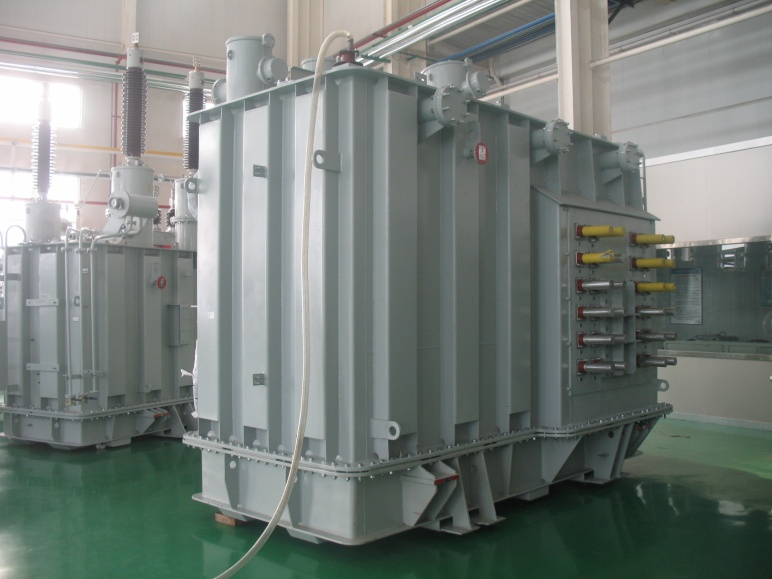
Oil-immersed transformers rely on insulating and cooling oil for efficient operation. However, oil leaks pose serious safety and environmental risks, including fire hazards, insulation breakdown, contamination, and equipment failure. Preventing and controlling oil leaks is crucial for maintaining transformer reliability, minimizing maintenance costs, and ensuring workplace safety.
Oil leaks in transformers can be prevented and controlled through regular inspections, proper sealing and gasket maintenance, oil level monitoring, pressure relief systems, and secondary containment measures. Implementing proactive maintenance and leak detection methods helps prevent environmental contamination, equipment damage, and fire hazards.
This guide explores common causes of oil leaks, preventive measures, leak detection techniques, and best practices for controlling transformer oil leaks.
Oil leaks in transformers do not pose significant risks.False
Oil leaks in transformers can lead to insulation failure, fire hazards, environmental contamination, and operational inefficiencies, making prevention and control essential.
1. What Causes Oil Leaks in Transformers?
Understanding the causes of transformer oil leaks helps in implementing effective preventive measures.
A. Deterioration of Seals and Gaskets
🔴 Aging Gaskets and Seals: Over time, rubber or cork gaskets harden and crack, losing their sealing effectiveness.
🔴 Thermal Expansion & Contraction: Continuous heating and cooling cycles weaken gasket material, leading to leaks.
🔴 Poor Installation or Improper Tightening: Uneven pressure distribution causes gaps in sealing areas.
✅ Solution:
✔ Replace aged or worn-out gaskets regularly.
✔ Use high-temperature-resistant and oil-compatible gasket materials.
✔ Ensure even torque application when tightening bolts.
B. Oil Tank and Radiator Damage
🔴 Corrosion and Rust Formation: Moisture exposure or oil degradation causes rust, leading to tank wall perforations.
🔴 Mechanical Impacts: Accidental physical damage during transportation or operation causes cracks in radiators or tanks.
🔴 Overpressure Due to Gas Accumulation: Faults inside the transformer cause gas pressure buildup, stressing tank walls.
✅ Solution:
✔ Apply anti-corrosion coatings to protect metal surfaces.
✔ Install oil pressure relief valves to prevent tank stress buildup.
✔ Perform periodic non-destructive testing (NDT) to detect early signs of tank wall weakening.
C. Improper Oil Level and Pressure Control
🔴 Overfilling or Underfilling Oil: Improper oil levels lead to pressure fluctuations, increasing leak risks.
🔴 Breather Malfunction: If the silica gel breather becomes saturated, it fails to regulate pressure, allowing moisture ingress.
🔴 Faulty Expansion Tanks: A damaged conservator tank fails to accommodate oil expansion, leading to leaks.
✅ Solution:
✔ Maintain optimal oil levels using automatic oil level indicators.
✔ Replace saturated silica gel in breathers regularly.
✔ Check conservator tanks and air seals for proper function.
2. Preventive Measures to Avoid Transformer Oil Leaks
Implementing a structured maintenance plan reduces leak risks and enhances transformer reliability.
A. Regular Transformer Inspections
| Inspection Task | Purpose | Frequency |
|---|---|---|
| Check seals and gaskets | Prevents leaks due to wear and tear | Every 6 months |
| Inspect oil tank and radiators | Identifies cracks, corrosion, or physical damage | Annually |
| Monitor oil levels and pressure | Ensures proper expansion and prevents overfilling | Monthly |
| Examine conservator and breather system | Prevents pressure fluctuations and moisture ingress | Every 6 months |
✅ Routine inspections help detect potential leak points before failures occur.
B. Using High-Quality Seals and Gaskets
Why? Poor-quality gaskets harden, crack, and degrade quickly, leading to leaks.
Best Practices for Seal & Gasket Maintenance:
✔ Use synthetic rubber gaskets (Nitrile, Viton) for high-temperature oil resistance.
✔ Apply proper torque and alignment when tightening sealing flanges.
✔ Replace gaskets every 5-7 years or sooner if deterioration is observed.
✅ High-quality sealing materials prevent long-term oil leaks.
C. Oil Pressure and Level Monitoring
Why? Sudden pressure spikes or low oil levels indicate potential leaks or gas accumulation.
| Parameter | Safe Range | Alarm Level |
|---|---|---|
| Oil Pressure | 0.5 - 1.5 bar | >2.0 bar (Risk of leaks) |
| Oil Level in Conservator | 50 - 80% | <40% (Possible leak) |
✅ Installing automatic pressure monitoring systems helps prevent oil leaks due to pressure fluctuations.
D. Protective Coatings and Corrosion Prevention
✔ Apply anti-corrosion paint on transformer tanks and radiators.
✔ Use stainless steel or epoxy-coated tanks for harsh environments.
✔ Implement cathodic protection (anodes) to reduce corrosion risks.
✅ Preventing corrosion eliminates a major cause of oil leaks.
3. Effective Methods to Detect Transformer Oil Leaks
A. Visual Inspections & Oil Stain Detection
🔍 Look for oil stains near sealing joints, tank welds, and radiators.
🔍 Check drain valves and pipe connections for slow leaks.
✅ Regular walk-around inspections help identify leaks early.
B. Thermal Imaging and Ultrasonic Testing
🌡 Infrared Thermal Imaging: Detects temperature anomalies that indicate oil leaks from hot surfaces.
🔊 Ultrasonic Leak Detection: Identifies pressurized oil leaks using acoustic sensors.
✅ Advanced testing methods improve early leak detection accuracy.
C. Oil Leak Dye Test
🟠 Inject UV-sensitive dye into transformer oil.
🔦 Use UV light inspection to locate leaks in pipes, gaskets, and tanks.
✅ Leak detection dye is highly effective in pinpointing small, hidden leaks.
4. Controlling and Containing Oil Leaks
A. Secondary Containment Systems
Why? If a leak occurs, containment prevents oil from spreading and contaminating the environment.
| Containment Method | Purpose |
|---|---|
| Oil Containment Pits | Collect leaked oil to prevent soil contamination. |
| Transformer Bund Walls | Prevents spilled oil from spreading to nearby equipment. |
| Oil Absorbent Pads & Barriers | Quickly absorbs leaked oil for easy cleanup. |
✅ Spill containment reduces fire risks and environmental hazards.
B. Emergency Oil Leak Repair Techniques
🛠 Temporary Sealing Compounds: Quick-seal epoxies plug small leaks until permanent repairs can be made.
🛠 Welding & Cold Metal Stitching: Structural repairs for cracks in tanks or radiators.
🛠 Oil Drain & Refill Procedures: In severe leaks, drain oil, repair damage, and refill with new, filtered oil.
✅ Fast leak repairs prevent major transformer failures.
How Does Proper Oil Handling Reduce Environmental Impact?
Transformer oil plays a critical role in insulation and cooling for oil-immersed transformers. However, if not handled properly, transformer oil can cause serious environmental hazards, including soil and water contamination, air pollution, and fire risks. Proper oil handling, storage, disposal, and spill prevention measures are essential to reduce environmental impact and maintain regulatory compliance.
Proper oil handling reduces environmental impact by preventing leaks, minimizing waste, ensuring safe disposal, and reducing emissions. Implementing best practices for oil storage, filtration, recycling, and spill control helps protect ecosystems, maintain equipment efficiency, and comply with environmental regulations.
This guide explores the environmental risks of improper oil handling and the best practices for reducing transformer oil’s environmental footprint.
Transformer oil handling does not affect the environment.False
Improper handling of transformer oil can lead to soil and water contamination, air pollution, and hazardous waste accumulation, making responsible management essential.
1. Environmental Risks of Improper Transformer Oil Handling
Transformer oil contains hydrocarbons and chemical additives, which, if mismanaged, can harm the environment.
A. Soil and Water Contamination
🛢 Oil Leaks and Spills: Uncontrolled leaks seep into the ground, contaminating soil and groundwater.
🛢 Poor Disposal Practices: Dumping used oil in open fields or drains pollutes water bodies and disrupts ecosystems.
🛢 Stormwater Runoff Pollution: Spilled oil washes into rivers and lakes, harming aquatic life.
✅ Solution:
✔ Use secondary containment systems to prevent spills from reaching soil and water.
✔ Recycle or treat used transformer oil instead of disposing it improperly.
✔ Follow hazardous waste disposal regulations for transformer oil.
B. Air Pollution from Oil Degradation
🌫 Burning Used Oil Illegally: Releases toxic fumes and greenhouse gases into the atmosphere.
🌫 Evaporation of Contaminants: Degraded oil releases volatile organic compounds (VOCs), reducing air quality.
🌫 Arcing and Overheating in Transformers: Produces dioxins and furans, harmful airborne pollutants.
✅ Solution:
✔ Avoid burning used oil; instead, use certified oil recycling services.
✔ Maintain transformer oil quality through regular filtration and purification.
✔ Store oil in sealed containers to minimize evaporation and air contamination.
C. Fire Hazards and Explosions
🔥 Leaked Oil Near Electrical Components: Can ignite, leading to fires and explosions.
🔥 Oil Sprays Under High Pressure: Can form a flammable mist, increasing fire risk.
🔥 Uncontrolled Storage of Used Oil: Increases risk of spontaneous combustion in high-temperature environments.
✅ Solution:
✔ Use fire-resistant oil containment barriers to prevent fire spread.
✔ Regularly inspect and repair leaks and faulty gaskets.
✔ Store used oil in non-flammable, sealed containers away from heat sources.
2. Best Practices for Proper Transformer Oil Handling
A. Safe Storage and Transport
Proper storage ensures oil integrity and prevents leaks during handling.
| Storage Practice | Purpose | Best Practice |
|---|---|---|
| Use Leak-Proof Containers | Prevent spills and contamination | Store in sealed metal or HDPE drums |
| Label Storage Tanks Clearly | Avoid accidental misuse | Mark with hazard signs and oil type |
| Store Oil Away from Water Sources | Prevent contamination | Keep at least 50 meters from rivers and wells |
| Use Oil Spill Trays | Catch leaks and drips | Place under oil storage tanks and drums |
✅ Proper storage prevents accidental environmental damage.
B. Spill Prevention and Control Measures
Preventing spills is more effective than cleaning them up.
| Prevention Method | Function |
|---|---|
| Oil Containment Bunds | Prevent oil from spreading in case of leaks |
| Automatic Leak Detection Sensors | Alerts operators to oil leakage |
| Drip Pans & Absorbent Pads | Capture small leaks before they spread |
| Spill Response Kits | Enables quick cleanup to minimize environmental impact |
✅ A fast spill response reduces contamination risks.
C. Recycling and Reusing Transformer Oil
Why? Recycling transformer oil reduces waste and environmental impact while saving costs.
Best Practices for Oil Recycling:
♻ Use oil regeneration systems to restore dielectric strength and remove contaminants.
♻ Filter and purify old oil instead of disposing of it.
♻ Work with certified recycling companies to reprocess used oil into lubricants or fuel.
✅ Recycling oil minimizes hazardous waste and extends its usability.
D. Proper Disposal of Used Transformer Oil
Used transformer oil is classified as hazardous waste, requiring safe disposal methods.
| Disposal Method | Environmental Impact | Best Practice |
|---|---|---|
| Landfilling | High contamination risk | Not recommended for PCB-contaminated oil |
| Burning as Fuel | Air pollution | Use controlled incineration in licensed facilities |
| Recycling & Re-refining | Low impact | Preferred for non-contaminated oil |
| Chemical Treatment | Reduces toxicity | Treat before disposal |
✅ Working with licensed disposal agencies ensures compliance with environmental laws.
E. Monitoring and Compliance with Environmental Regulations
🌍 Comply with local environmental laws regarding oil storage, disposal, and transportation.
🌍 Maintain oil handling records to track waste generation and disposal.
🌍 Train staff in proper oil handling procedures to prevent accidents and leaks.
✅ Following regulations ensures sustainability and avoids legal penalties.
3. Future Innovations in Sustainable Transformer Oil Management
🚀 Biodegradable Transformer Oils: Ester-based oils offer higher fire resistance and eco-friendly properties.
🚀 IoT-Based Leak Detection Sensors: Smart monitoring reduces oil waste and contamination risks.
🚀 Closed-Loop Oil Recycling Systems: Advanced regeneration technologies allow continuous oil reuse.
💡 Technological advancements improve transformer oil sustainability and reduce environmental footprint.
What Are the Best Practices for Eco-Friendly Transformer Maintenance?
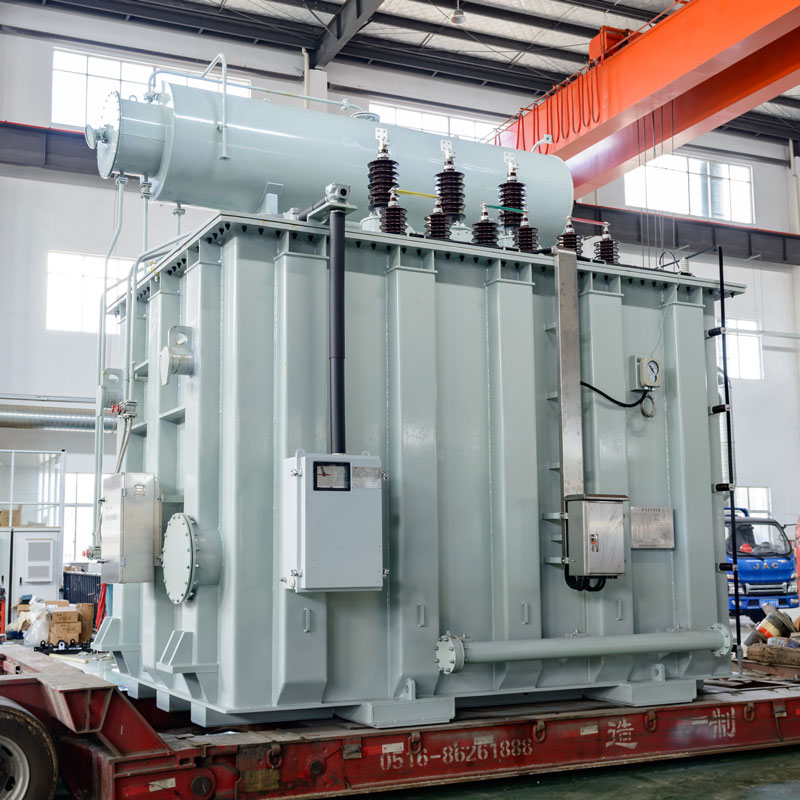
Transformers play a vital role in power transmission and distribution, but their operation can have a significant environmental impact due to oil leaks, energy losses, hazardous waste, and emissions. Eco-friendly transformer maintenance focuses on reducing pollution, improving energy efficiency, and ensuring sustainable equipment operation while complying with environmental regulations.
Eco-friendly transformer maintenance includes using biodegradable insulating oil, preventing oil leaks, optimizing energy efficiency, reducing hazardous waste, and implementing sustainable disposal practices. Proper maintenance ensures lower emissions, improved longevity, and minimal environmental impact.
This guide explores sustainable maintenance strategies, eco-friendly materials, and best practices for reducing the environmental footprint of transformers.
Transformer maintenance has no impact on environmental sustainability.False
Implementing eco-friendly transformer maintenance reduces energy waste, prevents oil spills, and ensures compliance with environmental regulations.
1. Why Is Eco-Friendly Transformer Maintenance Important?
Sustainable transformer maintenance provides:
✅ Lower environmental impact by reducing hazardous waste and emissions.
✅ Improved energy efficiency, reducing carbon footprint.
✅ Longer transformer lifespan, minimizing replacement needs.
✅ Regulatory compliance, avoiding fines for environmental violations.
💡 Sustainable maintenance practices contribute to cleaner and more efficient power systems.
2. Key Eco-Friendly Transformer Maintenance Practices
A. Using Biodegradable and Sustainable Transformer Oil
Traditional mineral-based transformer oils are non-biodegradable and can contaminate soil and water if leaked. Eco-friendly alternatives provide safer and more sustainable insulation solutions.
| Oil Type | Environmental Benefits | Fire Safety |
|---|---|---|
| Natural Ester Oil | 100% biodegradable, non-toxic | High fire resistance |
| Synthetic Ester Oil | Long lifespan, reduced oxidation | Medium fire resistance |
| Silicone-Based Oil | Recyclable, low environmental impact | High fire resistance |
| Mineral Oil | Non-biodegradable, hazardous | Low fire resistance |
✅ Switching to biodegradable transformer oil reduces pollution risks and enhances fire safety.
B. Preventing Oil Leaks and Contamination
Oil leaks cause soil and water contamination, increasing environmental risks. Proper sealing, monitoring, and containment prevent leaks.
| Preventive Measure | Purpose | Best Practice |
|---|---|---|
| Regular Gasket Replacement | Prevents oil seepage from aging seals | Replace every 5-7 years |
| Oil Leak Detection Sensors | Alerts operators to leaks before spills occur | Install in high-risk areas |
| Oil Spill Containment Systems | Prevents leaked oil from spreading | Use bund walls and absorbent barriers |
✅ Preventing leaks minimizes environmental impact and fire hazards.
C. Energy Efficiency Optimization
Energy-efficient transformers consume less power, reducing greenhouse gas emissions from power generation.
| Efficiency Improvement | Purpose | Best Practice |
|---|---|---|
| Use Low-Loss Core Materials | Reduces energy wasted as heat | Install amorphous metal cores |
| Monitor Load Levels | Prevents overloading and inefficiency | Use real-time load monitoring systems |
| Upgrade to Smart Cooling Systems | Reduces unnecessary fan or pump usage | Install IoT-based cooling controls |
✅ Optimizing transformer efficiency reduces carbon footprint and operational costs.
D. Sustainable Cooling System Maintenance
Transformer cooling systems rely on air, oil, or water to dissipate heat. Eco-friendly cooling methods reduce energy use and pollution.
| Cooling Method | Environmental Impact | Best Practice |
|---|---|---|
| ONAN (Oil Natural Air Natural) | Low impact, no external power needed | Clean radiators regularly |
| ONAF (Oil Natural Air Forced) | Moderate power use for fan cooling | Use energy-efficient fan motors |
| OFWF (Oil Forced Water Forced) | Higher water use, potential contamination risk | Use closed-loop cooling to reduce water waste |
✅ Maintaining cooling systems efficiently lowers energy use and extends equipment life.
E. Reducing Hazardous Waste and Recycling Materials
Waste from transformer maintenance, such as used oil, metal, and insulation, must be managed sustainably.
| Waste Reduction Strategy | Benefit | Best Practice |
|---|---|---|
| Oil Filtration and Reuse | Extends oil life, reduces waste | Perform oil purification every 3-5 years |
| Recycling Transformer Components | Minimizes landfill waste | Recycle copper, aluminum, and steel parts |
| Safe Disposal of Contaminated Oil | Prevents soil and water pollution | Work with licensed disposal facilities |
✅ Proper waste management reduces landfill impact and supports a circular economy.
F. Smart Monitoring and Predictive Maintenance
IoT-based smart monitoring systems improve transformer efficiency by detecting faults before they cause failures.
| Smart System | Benefit | Best Practice |
|---|---|---|
| Dissolved Gas Analysis (DGA) Sensors | Detects overheating and insulation breakdown early | Monitor continuously |
| Thermal Imaging Cameras | Identifies hot spots, reducing energy waste | Perform scans every 6 months |
| Automated Load Management Systems | Prevents overloading, extending transformer life | Integrate into grid control systems |
✅ Smart monitoring reduces energy waste and prevents costly failures.
3. Regulatory Compliance and Environmental Safety
Transformers must comply with environmental safety standards to ensure sustainability.
🌍 ISO 14001 Certification – Establishes environmental management best practices.
🌍 EPA Regulations – Governs hazardous waste disposal and emissions.
🌍 RoHS & REACH Compliance – Restricts hazardous substances in electrical equipment.
✅ Following regulations ensures legal compliance and corporate environmental responsibility.
4. Future Innovations in Eco-Friendly Transformer Maintenance
🚀 Green Transformer Designs – Advanced materials with low-loss cores and sustainable insulation.
🚀 AI-Based Predictive Maintenance – Machine learning detects efficiency losses and predicts failures.
🚀 Closed-Loop Oil Regeneration – On-site filtration systems extend oil life indefinitely.
🚀 Hydrogen-Free Cooling Systems – Reduce reliance on oil-based cooling for minimal environmental impact.
💡 Next-generation technologies will make transformers more sustainable and efficient.
How Can Regulatory Compliance Improve Transformer Safety and Sustainability?
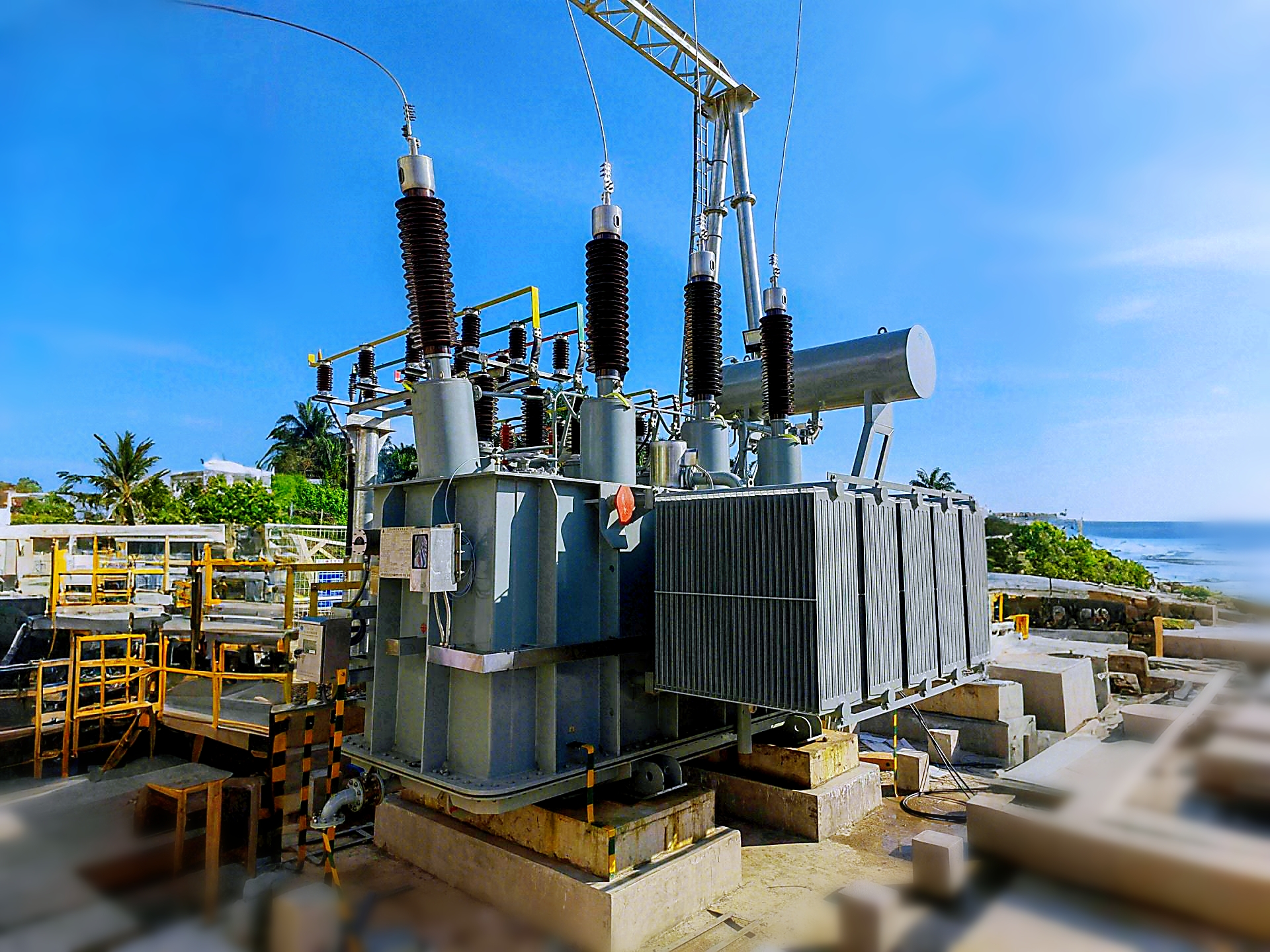
Transformers are essential components of power transmission and distribution systems, but they also pose safety, environmental, and operational risks if not properly maintained. Regulatory compliance ensures transformers meet safety standards, reduce environmental impact, and operate efficiently, improving reliability and sustainability.
Regulatory compliance improves transformer safety and sustainability by ensuring adherence to industry standards, preventing electrical failures, reducing environmental pollution, and extending transformer lifespan. Compliance with safety and environmental regulations minimizes hazards, enhances energy efficiency, and promotes responsible waste management.
This guide explores key transformer regulations, their impact on safety and sustainability, and best practices for compliance.
Regulatory compliance is not necessary for transformer safety and sustainability.False
Compliance with safety and environmental regulations prevents electrical hazards, reduces pollution, and ensures the long-term reliability of transformers.
1. Why Is Regulatory Compliance Important for Transformers?
Following transformer regulations provides:
✅ Enhanced safety by preventing fires, electrical failures, and accidents.
✅ Reduced environmental impact by controlling oil leaks, emissions, and hazardous waste.
✅ Improved operational efficiency through adherence to energy efficiency standards.
✅ Legal protection by avoiding fines and penalties for non-compliance.
💡 Compliance ensures transformers operate reliably while meeting industry and environmental standards.
2. Key Regulatory Standards for Transformer Safety and Sustainability
A. Electrical Safety and Performance Standards
| Regulation | Governing Body | Purpose |
|---|---|---|
| IEC 60076 | International Electrotechnical Commission (IEC) | Defines safety and performance standards for power transformers. |
| IEEE C57 | Institute of Electrical and Electronics Engineers (IEEE) | Covers transformer design, testing, and insulation requirements. |
| NFPA 70 (NEC) | National Fire Protection Association (NFPA) | Provides fire safety guidelines for transformer installations. |
| OSHA Transformer Safety Rules | Occupational Safety and Health Administration (OSHA) | Ensures worker safety during transformer operation and maintenance. |
✅ Following these standards minimizes electrical risks and enhances safety.
B. Environmental and Sustainability Regulations
| Regulation | Governing Body | Purpose |
|---|---|---|
| EPA PCB Regulations | Environmental Protection Agency (EPA) | Limits the use of polychlorinated biphenyls (PCBs) in transformers. |
| RoHS Directive | European Union (EU) | Restricts hazardous substances in electrical equipment. |
| ISO 14001 | International Organization for Standardization (ISO) | Establishes environmental management best practices. |
| REACH Compliance | European Chemicals Agency (ECHA) | Regulates the use of harmful chemicals in transformers. |
✅ Environmental compliance reduces pollution and promotes sustainable transformer management.
C. Energy Efficiency Standards for Transformers
| Regulation | Governing Body | Purpose |
|---|---|---|
| DOE 10 CFR Part 431 | U.S. Department of Energy (DOE) | Sets minimum energy efficiency levels for distribution transformers. |
| EU Ecodesign Directive (Tier 2) | European Union (EU) | Mandates high-efficiency transformer designs to reduce energy losses. |
| MEPS (Minimum Energy Performance Standards) | Various national energy agencies | Requires transformers to meet energy efficiency benchmarks. |
✅ Compliance with energy efficiency standards lowers operational costs and carbon emissions.
3. How Regulatory Compliance Enhances Transformer Safety
A. Preventing Electrical Failures and Fires
⚡ Proper insulation testing ensures high dielectric strength.
⚡ Compliance with short-circuit withstand requirements prevents catastrophic failures.
⚡ Fire-resistant enclosures reduce the risk of transformer explosions.
✅ Adhering to safety standards minimizes electrical hazards.
B. Ensuring Safe Handling of Transformer Oil
🛢 Leak-proof containment prevents oil spills and soil contamination.
🛢 Monitoring for dissolved gases (DGA) detects internal faults before failures occur.
🛢 Fire-resistant insulating oils (ester-based oils) reduce fire hazards.
✅ Proper oil management prevents environmental pollution and improves fire safety.
C. Improving Worker Safety
🦺 Lockout/Tagout (LOTO) procedures prevent accidental energization.
🦺 Proper grounding techniques reduce electric shock risks.
🦺 Safety gear and training ensure compliance with OSHA standards.
✅ Worker safety compliance prevents accidents and liability risks.
4. How Regulatory Compliance Supports Sustainability
A. Reducing Carbon Footprint and Energy Waste
🌍 High-efficiency transformers reduce energy losses and greenhouse gas emissions.
🌍 Smart cooling systems (IoT-enabled) optimize energy use.
🌍 Recycling and refurbishing old transformers reduce waste.
✅ Sustainable compliance reduces energy costs and environmental impact.
B. Preventing Toxic Waste and Pollution
🌱 PCB-free transformer oils eliminate long-term environmental hazards.
🌱 Strict waste disposal regulations prevent hazardous landfill contamination.
🌱 Recycling used transformer components (copper, steel, and oil) supports circular economy practices.
✅ Environmental regulations ensure responsible waste management.
C. Promoting Eco-Friendly Transformer Design
💡 Adopting amorphous metal cores reduces energy losses.
💡 Using biodegradable transformer oils enhances sustainability.
💡 Developing dry-type transformers eliminates oil spill risks.
✅ Green transformer technologies align with sustainability goals.
5. Best Practices for Ensuring Transformer Regulatory Compliance
| Best Practice | Purpose | Recommended Action |
|---|---|---|
| Perform Regular Safety Audits | Identifies compliance gaps | Conduct annual inspections |
| Maintain Accurate Compliance Records | Ensures regulatory transparency | Document transformer tests and maintenance logs |
| Use Smart Monitoring Systems | Enhances predictive maintenance | Install IoT-based sensors for real-time fault detection |
| Train Employees on Safety Standards | Reduces workplace accidents | Provide OSHA and NFPA training for workers |
| Partner with Certified Recycling Firms | Ensures eco-friendly waste disposal | Recycle oil, metal, and electrical components |
✅ Following best practices improves compliance and enhances transformer sustainability.
6. Future Trends in Regulatory Compliance for Transformers
🚀 AI-Based Compliance Monitoring: Smart algorithms analyze transformer data for regulatory compliance.
🚀 Carbon Neutral Transformers: Eco-friendly designs reduce emissions and improve sustainability.
🚀 Stronger PCB Elimination Laws: Global efforts to phase out hazardous chemicals in transformers.
🚀 Blockchain-Based Compliance Tracking: Secure records ensure transparent sustainability reporting.
💡 Advancements in compliance technology will make transformers safer and more energy-efficient.
Conclusion
Ensuring safety and minimizing environmental impact in oil-immersed transformers requires proactive measures, including fire prevention, oil containment strategies, and sustainable maintenance practices. By adopting best practices and adhering to regulations, operators can enhance safety, reduce ecological harm, and ensure long-term transformer reliability.
Looking for expert solutions to improve transformer safety and sustainability? Contact us today for professional guidance!


